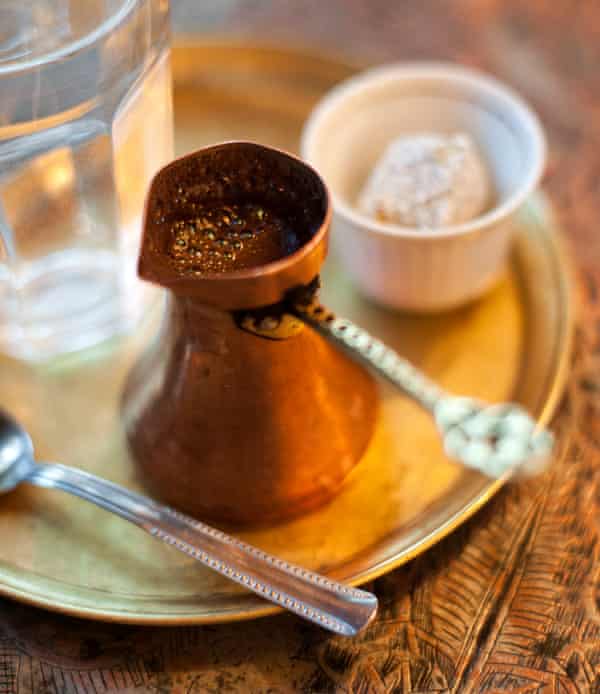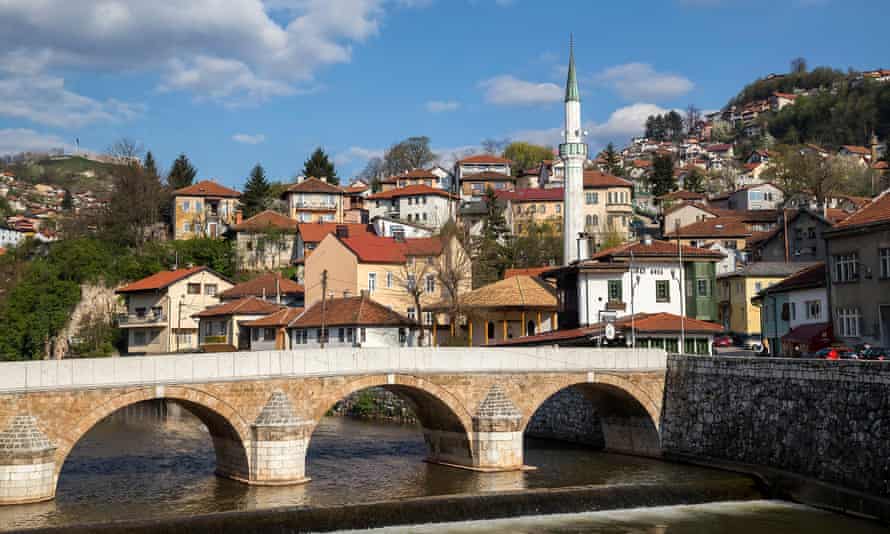Its idyllic mountain setting and diverse heritage make Sarajevo one of Europe’s most intriguing cities. Yet, it is its indomitable spirit that makes it truly special.
A Warm Welcome to Sarajevo
If ever a greeting has momentarily filled my head with mixed emotions, it was the one offered to me the other day by a smiling young taxi driver at an airport.
“Welcome to Sarajevo,” he announced, and then he sped me off to my hotel in Baščaršija, the city’s cultural and historic heart.
Although Sarajevo, capital of Bosnia and Herzegovina, is a name which might seem inextricably linked to war and tragedy, the passing of 20 years has done much to heal this remarkable and resilient city, and tourism is now sharply on the rise. The reason is obvious. Sarajevo is beautiful.
The city is tucked inside a long, thin valley and surrounded on all sides by forested mountains, and almost every crossroads and street corner provides at least a glimpse of an idyllic picture-postcard backdrop.
The City’s Dramatic Geography
During the worst moments in the city’s history, when its inhabitants were targeted by snipers, this dramatic geography proved to be a terrifying drawback, but thankfully, the spectacular natural beauty of Sarajevo can again be admired and enjoyed.
The best way to do this is to find the highest vantage point possible, and with the recent reopening of Sarajevo’s iconic cable car, a trip up the mountainside has, once again, been made easy.
A short walk from Baščaršija brings you to the shiny new cable car station in the foothills of Mount Trebević, one of the peaks that played host to events in the 1984 Winter Olympics.

Sarajevo’s Picturesque Viewpoints
For a return fee of 20 Bosnian marks (approximately £10), this must-do cable car lifts you more than 1,100m in seven minutes, providing breathtaking views every second of the way.
At the top, the perspective shifts and changes like a kaleidoscope. In the short space of time that I was on the mountain, I saw the cityscape swelter beneath me under a clear blue sky and then quickly become obscured by twirling strands of mist that seemed to appear from nowhere.
A Cultural Melting Pot
It’s a view that defies comparison with most other European cities. Mosques and minarets decorate the skyline along with the Romanesque towers of Catholic churches and the onion-shaped domes of Orthodox ones. And that is another thing that makes this city so fascinating: it’s a place where East and West meet.
On the main pedestrian thoroughfare, Ferhadija, this cultural equator is marked for posterity on the pavement, and a sign encourages visitors to take a photo of one way up the street and then another.
The contrast is stark. Austro-Hungarian architecture and a mosaic of western shop signs can be seen in one direction, while, with a simple turn of the head, the outlook abruptly transforms into a Turkish bazaar.
On one side of this line, people sit and drink beer at tables on the street, while on the other, there isn’t a drop of alcohol to be found. Instead, you’ll find open-fronted cafes offering strong Bosnian coffee and also, perhaps, a puff on a hookah pipe.hile on the other, there isn’t a drop of alcohol to be found. Instead, you’ll find open-fronted cafes offering strong Bosnian coffee and also, perhaps, a puff on a hookah pipe.

A Symbol of Cultural Resilience
A short distance away and one sight not to be missed in Baščaršija is Gazi Husrev-Bey’s mosque. Actually, you can’t miss it; the largest Ottoman mosque in Bosnia and Herzegovina, it is awe-inspiring from every aspect. This mosque is used to the curiosity of tourists and welcomes them.
Like the Sacred Heart Catholic Cathedral, which can be found on the western side of Ferhadija’s cultural dividing line, it was significantly damaged during the war and its continued presence makes it an important symbol of the city.
Sarajevo has such a good vibe that it can be extremely difficult to grasp the terror of what happened here as recently as the mid-1990s. But the truth is that you don’t need to look far for evidence.
Any building that predates that time is likely to be pockmarked with bullet holes, and a memorial garden in Veliki Park, opposite one of Sarajevo’s busiest shopping malls, quietly commemorates the 1,500 children who lost their lives during the 44-month-long siege.
Even without factoring in its incendiary role in the First World War, the history of Sarajevo can seem impossibly sad. Despite that, it doesn’t feel like a sad place to visit because when you come here, you get the sense that the city is now looking to the future. And it does that with dignity, resilience, an indomitable spirit, and hope.
If you want to discover something remarkable, then make your way to Sarajevo.

Learn More About Sarajevo
If you’re looking to get a comprehensive overview of Sarajevo’s history and culture without breaking the bank, our Sarajevo Free Walking Tour is the perfect choice. This tour takes you through the heart of the city, where you will explore historic landmarks such as the Latin Bridge, Gazi Husrev-bey Mosque, and the bustling Baščaršija market.
Our knowledgeable guides provide fascinating insights into the city’s Ottoman and Austro-Hungarian influences, ensuring you leave with a deeper understanding of Sarajevo’s past and present. Best of all, it’s free, making it an accessible option for all travelers.
Book your free tour today: https://www.sarajevoinsider.com/tour/sarajevo-free-walking-tour/
Sarajevo Grand Walking Tour
For those who want a more in-depth exploration, the Sarajevo Grand Walking Tour is an excellent option. This tour covers all the major highlights of the Free Walking Tour, plus additional sites that delve deeper into Sarajevo’s history. You’ll visit the City Hall, the Vijećnica National Library, and the site of Archduke Franz Ferdinand’s assassination.
The tour also includes a journey up Mount Trebević via the iconic cable car for breathtaking panoramic views of the city. This extended tour offers a thorough and immersive experience, perfect for those who want to make the most of their time in Sarajevo. Book Sarajevo Grand Walking tour: https://www.sarajevoinsider.com/tour/grand-tour/


